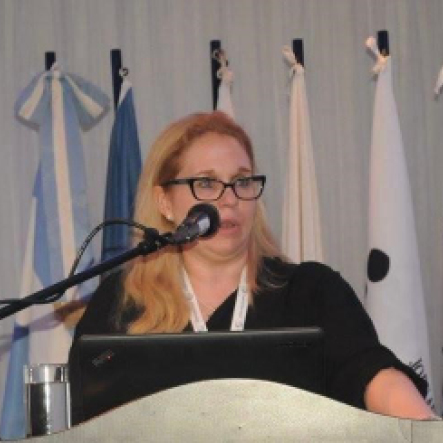
Title: Microplastics and nanoplastics in the Antarctic Peninsula. Considerations on its impact on ecosystems and human health and possible uses of nanomedicine
Plenary Speaker
Cecilia Colautti
National Defense University, Republic of Argentina, Argentina
Abstract
In recent years, microplastics and nanoplastics have been identified in a range of remote environments, including Antarctica. However, data throughout the Southern Hemisphere, particularly Antarctica, are largely absent. Microplastics and nanoplastics have negative effects on marine organisms and act as vectors for persistent organic pollutants and other toxic substances, which are harmful to aquatic environments and organisms. Microplastics and nanoplastics also pose serious problems for human health. Microplastics and nanoplastics have been recognized as widespread pollutants in the marine environment and are known to be damaging to terrestrial and aquatic ecosystems, while their small size and relatively low density also allow them to become airborne and transported over large distances. This abstract highlights the latest research carried out by Argentine scientists from Antarctic bases located in the Antarctic Peninsula on the presence of micro and nanoplastics. In addition, we analyze the application of the potential for using nanomedicine in occupational health, and environment protection, and underscore the need for further research and development in this field.
Biography
María Cecilia Colautti is Doctor of Medicine from the Inter-American Open University (UAI), Postgraduate Studies in Pain Medicine from Favaloro University. Specialist in Occupational Medicine from the Medical College of the Province of Buenos Aires. Specialist in Forensic Medicine from the Argentine Catholic University (UCA). Master's degree in Occupational Health and Safety Emilio Andrada is Master in Occupational Health and Safety(FIE), Specialist in Environmental Protection (UM)and Bachelor in Organization and Strategy(UNDEF). Mariano Ferro is a sociologist, PhD (University of Buenos Aires, Argentina), Researcher at the Ecology and Sustainable Development Institute (INEDES).

Title: Contactless Magnetic Sensing in Condition Monitoring and Anomaly Detection for Smart Grid: New Possibilities and Alternatives
Plenary Speaker
Prof. Philip Pong
New Jersey Institute of Technology, United States
Abstract
Our physical and cyber environments are becoming increasingly intertwined with smarter sensing, communication, and data analytics. Our daily livings are indeed surrounded by a wide variety of sensors, IoT connectivity, and edge computing devices, constituting smart grid, smart city, smart transportation, and so on. The availability of sensing devices with measurement, communication, and processing capabilities is providing fine-grained data. Together with multimodal sensory data collection and sensor fusion can result in actionable insights and decisions. This synergy can lead to improved ways and quality of life in what we call smart living.
Magnetism is one of the six energy forms of measurands in sensing. Magnetic sensing plays a critical role in smart living due to various sources of magnetic fields such as magnetic fields from current-carrying wires and permanent magnets which are geometrically determined by Biot-Savart Law and Ampere's Law respectively. These magnetic fields can range from DC to AC, from low frequency to high frequency. Modern civilization heavily relies on electricity which are generated, transmitted, and utilized through various kinds of transmission medium and electrical machines that are composed of current-carrying conductors, electromagnets, and permanent magnets. As such, magnetic field sensing is an important source of data and thus information for condition monitoring of power generation, transmission, and distribution.
In this talk, we will discuss the various opportunities and alternatives magnetic field sensing can offer in condition monitoring and anomaly detection in smart grid and smart city. Since it is contactless sensing, its installation is easy and it can be easily retrofitted to the existing plant and equipment. This will minimize cost, avoid wear and tear, and meet stringent reliability requirement. Contactless magnetic sensing can complement the traditional contact measurement techniques and help to overcome the major obstacle towards pervasive sensing due to its scalability.
Biography
Philip W. T. Pong received a B.Eng. from the University of Hong Kong (HKU) with 1st class honours. Then he obtained a PhD in engineering at the University of Cambridge. He was a postdoctoral researcher at the Magnetic Materials Group at the National Institute of Standards and Technology (NIST) for three years. Currently he is an Associate Professor in the Department of Electrical and Computer Engineering at New Jersey Institute of Technology (NJIT). His research interest focuses on the fault detection, predictive maintenance, and anomaly detection of power grid. He is the Founding Director of the Green Technology Research and Training Laboratory, leading the research and education activities of offshore wind energy at NJIT. Philip Pong is a Fellow of the Institution of Engineering and Technology (FIET), a Fellow of the Institute of Physics (FInstP), a Fellow of the Energy Institute (FEI), a Fellow of the Institute of Materials, Minerals and Mining (FIMMM), a Fellow of the Hong Kong Institution of Engineers (FHKIE), a Fellow of the NANOSMAT Society (FNS), a chartered physicist (CPhys), a chartered engineer (CEng), a chartered energy engineer, a registered professional engineer (R.P.E. in Electrical, Electronics, Energy), and a Senior Member of IEEE (SMIEEE). He serves on the editorial boards for several IEEE and SCI journals.

Title: The Rational Synthesis of Lanthanum Manganite Nanoparticles for Magnetic Refrigeration Applications
Plenary Speaker
Prof. Everett Carpenter
Virginia Commonwealth University, United States
Abstract
Gas expansion refrigeration systems account for over 30% of the total energy usage in commercial and residential buildings. They are a major drain on energy resources, source of greenhouse gas emissions, and use environmentally unfriendly chemicals. Magnetic refrigeration, which employees the magnetocaloric effect, has the potential to mitigate the energy drain and greenhouse gas emissions and is based on green available materials. Lanthanum manganite nanomaterials (LaxA1-xMnO3, where A = Ca2+, Sr2+, Na+, Ba2+, etc) exhibit promise as efficient, inexpensive solid refrigerants. The magnetic properties, namely Tc and ΔS, can be tuned by altering the ratio of Mn3+ to Mn4+ and the Mn-O-Mn bond distances and angles through the introduction of various metals at the a-site. We use a modified sol-gel synthesis which allows for control over the Tc and ΔS.
The Mn-O-Mn bond distances and angles were controlled through a-site cation size disorder resulting from a substitution of Sr2+ in place of Ca2+ in the La0.60Ca0.40-xSrxMnO3 crystal lattice. As Sr2+ was introduced the lattice parameters increased and crystallite size decreased. The lattice distortion created a 73% decrease in ΔS – from 5.6 J/kgK to 1.5 J/kgK.4 Any Tc affects were offset by the decreasing crystallite size. By contrast, introducing Na+ into the lattice in place of Ca2+ did not alter the lattice parameters of La0.60Ca0.4-xNaxMnO3 materials or the resultant crystallite sizes, but did increase the amount of Mn4+ and decrease the amount of Mn3+. The Tc values increased dramatically, however, from 265K to 333K, and ΔS saw a 33% decrease from 4.1 J/kgK to 2.8 J/kgK. This implies that Mn-O-Mn bond distances and angles are primarily responsible for ΔS, while Mn oxidation states are primarily responsible for Tc. Work done to optimize the synthesis parameters revealed that larger crystallites are ideal as well as the optimal synthesis parameters to achieve the largest crystallite sizes. These findings were successfully applied to La0.75Ca0.25MnO3 materials and the Tc value was increased from 200K, shown in the literature, to 280K
Biography
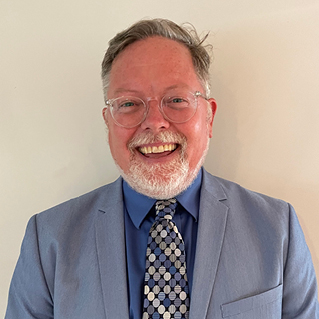
Title: A Review of Nanomaterials in Humans
Plenary Speaker
Prof. Thomas J Webster
HCR Interstellar Therapeutics, Boston, MA USA. (H index: 118)
Abstract
Nanomaterials have been widely tested in vitro and in small order animal studies for decades. Results have shown greater tissue growth, decreased bacteria growth, and inhibited inflammation. However, few studies exist examining human tissue response to nanomaterials. This presentation presents a cohort study of nano implants inserted into humans. In particular, one study includes the implantation of nanotextured spinal implants into over 14,000 patients over the past 5 years. Results demonstrated no cases of infections or other implant failures which is significantly better than statistics on conventional spinal implants which can have up to 20% failure rates. This study will further explain that nano implants mimic the natural nano texture of bone itself and possess surface energy that can competitively increase the adsorption of proteins known to promote osteoblast (bone forming cells) functions, decrease bacteria functions, and limit inflammatory cell functions. As such, this presentation will cover the few human clinical studies on nano implants showing improved human health.
Biography
Thomas J. Webster’s (H index: 118; Google Scholar) degrees are in chemical engineering from the University of Pittsburgh (B.S., 1995; USA) and in biomedical engineering from RPI (Ph.D., 2000; USA). He has served as a professor at Purdue (2000-2005), Brown (2005-2012), and Northeastern (2012-2021; serving as Chemical Engineering Department Chair from 2012 - 2019) Universities and has formed over a dozen companies who have numerous FDA approved medical products currently improving human health. He is currently helping those companies and serves as a professor at Hebei University of Technology, Saveetha University, Vellore Institute of Technology, UFPI, and others. Dr. Webster has numerous awards including: 2020, World Top 2% Scientist by Citations (PLOS); 2020, SCOPUS Highly Cited Research (Top 1% Materials Science and Mixed Fields); 2021, Clarivate Top 0.1% Most Influential Researchers (Pharmacology and Toxicology); 2022, Best Materials Science Scientist by Citations (Research.com); and is a fellow of over 8 societies. Prof. Webster is a former President of the U.S. Society For Biomaterials and has over 1,350 publications to his credit with over 53,000 citations. He was recently nominated for the Nobel Prize in Chemistry (2023).

Title: What is the Perspective Future of Nanotechnology?
Plenary Speaker
Dr. Yuvaraja Visagathilagar
Principal Engineer at QinetiQ,
Australia
Abstract
For many decades, integrated optics has been a forefront of highly technological research and development due to miniaturization for many applications from commercial, defence but normal daily personal user space such at home to everyday use of mobile technological devices. There devices can be integrated to form a full functionality compared to many past applications and ease of adaption with different integrated materials.
Now for some years, nanotechnology has become key word used in many applications as was many decades back we used to understand other integrated materials like GaAs, LiNbO3, InP and so forth as key materials and still are used many applications. The use of Nanotechnology work has gone from initial constraint concept to a more advanced development that was not viewed it can achieved in many back. Nanotechnology is being used in many applications like medical devices in particular due to nature of certain characteristics that other materials have limitations. There is extensive work globally in the field of nanotechnology with its integration with other mature materials but also novel nanotechnical materials which can used to form many notable uses of mechanisms in multilevel device formation and routing. These nanotechnologies have shaped the way on how it is used to further miniaturization and integration importantly use of cheap and vastly available material like Silicon due to its key properties and freely available.
In this talk, I will provide a history of Nanotechnology from R&D to technological use in many of applications but will provide key and valuable insight into the prototype to commercialization of devices and integration. Key and valuable overview will be provided to key area such as medical applications as the use of integrated devices. Nanotechnology has proven to be technology to be the future and its maturity is now well known of its characteristics and further advanced development work is still on-going. We will hear from many of experts today presenting their work in nanotechnology and what its implications for the future of technological advancement.
Biography
Dr Yuvaraja Visagathilagar, PhD (Australia), BEng(1stc Hons., Australia), FIEAust, SMIEEE, CPEng, NER RPEV RPEQ, APEC Engineer, IntPE(Aus), IEA, PRINCE2, MOSA, LM-MTT, MEDS, MSPIE, MAOS, MANZOS, MAIP, MBCS has over 27+ years of extensive expertise and experience in academia, research, and industry. He graduated with Bachelor of Engineering in Communication Engineering and Doctorate in Engineering (with a highly prestigious scholarship from the Australian Government) in 1996 and 2003 respectively from RMIT University, Melbourne Australia. His dissertation was in “Narrow-band Optical Modulator on Lithium Niobate” for telecommunication applications, but it can be applied for other transceivers applications. In research and industry, he has contributed to over 40+ peer-reviewed international journals and conference pubications. He has visited and presented at universities in USA (i.e. UCLA and UCSD), Peregrine Semiconductor Corporation and in Japan (i.e. Science and technology Organisation).He has collaborated with Defence Science Technology Organisation (now DSTG) in Australia where he has contributed in the design, fabrication, packaging and testing of “High-Speed Lithium Niobate Optical Modulator” including documentation of processes for quality certification (ISO 9001) and flip-chip packaging of narrow-band optical modulators on Lithium Niobate and Ceramic materials. He has extensive academic teaching as a lecturer and post-doctorate research fellow in Photonics, FibreOptics & System, RF System, and Integration where he was involved in research of novel design of narrowband optical modulators. In early years, his research was in Narrow-band Lithium Niobate Modulators but also in finding a solution for packaging of optoelectronic devices (i.e. ceramic and Silicon materials). During the collaboration, he worked with sub-contractors in system integration and packaging of the modulator devices in hermetically sealed packages for defence applications. In 2006, he joined “Future Fibre Technologies Ltd” who are the global leading organisation in optical sensing technologies and has extensive experience over 9 years in optical sensing. He was a senior manager and held positions as Senior Fibre Systems Engineer, R&D Team Leader and Applications Engineering Manager where he contributed in the company products enhancements and novel products design. He has contributed to 2 patent solutions for novel systems in optical fibre sensing and contributed to over 110+ reports with fellow colleagues and R&D teams (not published due to commercial-in-confidence). From July 2016 to March 2018, he was a Senior Academic at RMIT University for postgraduate and undergraduate courses in Electrical Engineering Analysis using Matlab, Electronic Engineering, Radar technologies, Communication systems, Optical/Photonic Engineering, Microwave Circuits & System and Advanced Mathematics for various program levels (or years). He contributed to the development teaching materials of a core course in Optical Fibre Systems and Networks for Bachelor and Master’s Program including supervising for over 10+ projects in undergraduate and postgraduate students with a minor thesis. Since April 2018 to June 2020, he is a Senior Academic with the Department of Electrical and Electronics Technology & Engineering, Applied Engineering College (AEC), Riyadh, Kingdom of Saudi Arabia which is affiliated with Lincoln College International and University of Hull, UK with accreditation of Colleges of Excellence by the Government of Kingdom of Saudi Arabia where he is undertaking teaching in Electrical and Electronics technologies & principles for various Bachelor level program. He has been a senior supervisor for over 30+ projects and a minor thesis. In July 2020, he is a researcher undertaking photonics research into reservoir computing and senior academic in lecturing a topic in Optical Fibre Communication Systems, Digital Electronics projects using Altium to design & built a Digital Oscilloscope and Microwave/RF Systems with ©Cadence and Electronic Engineering at the University of Melbourne (Australia) and in January 2021, he joined RMIT University as a researcher and senior academic undertaking research in optical fibre systems and transmission with high-level multi-disciplinary engineering team. Since January 2022, he joined QinetiQ Australia as a Principal Engineer (Senior RF/EMI/EMC Systems Engineer) as a Design and Advisory role providing his expertise & experience in defence and government projects with key interest in Microwave/RF/Radar Communication Engineering, coherent detection optical sensing for pipelines, undersea exploration, seismic detection and temperature sensing, high-speed and narrow-band optical modulators. Early 2023, he was awarded Fellow of Institute of Engineers Australia (FIEAust), the highest recognition and award for his many long years of professional engineering work spanning 27+ years to Australian and global community with extensive experience and expertise in his key area of work as a Communication & Electronics Engineer in academia, industry including research and social activities where he was been a mentor to interns, graduates but he is a Chairperson on various Engineering societies, chapters and editorial boards. This recognition is only awarded to individuals by Invitation Only for their outstanding professional engineering work with key engineering contribution. He received other recognitions amd accreditation & certified with the Engineers Australia (EA) Chartered Professional Engineering (CPEng) and in the National Engineers Register (NER), APEC Engineer, IEA & IntPE(Aus)/ At present he is providing teaching to High School students and supporting undergraduate & postgraduate engineering students with his own educational business (Educational Luminance, www.EducationalLuminance.com) He has a distinguished professional engineering career, he is an active Senior Member of the IEEE for over 28+ years’ service where he is the Chair of the Victorian IEEE Electron Devices & Photonics Society Joint Chapter and representative in the Section Committee, Australia from 2017 He is a active member of IEEE where he is a key volunteer for the Senior Member Elevation reference in Victoria, Australia (or globally), Member of OSA, SPIE, AP-MTT, AIP, AOS, BCS and certified in PRINCE2® & system engineering. He is in various editorial boards for peer-reviewed international journals and key reviewer for many international scientific journals and conferences. He has presented at various international and local conferences as Plenary, Keynote, Invited and has been asked to provide a welcome talk at conference. Other interests include and on-going, provides professional engineering consultancy to organisations locally and globally but passionate about teaching high school students from year 7 – VCE & other states in all Mathematic, Physics, System Engineering and Technology. Please see the https://www.linkedin.com/in/dr-yuvaraja-visagathilagar/ & technical profiles.
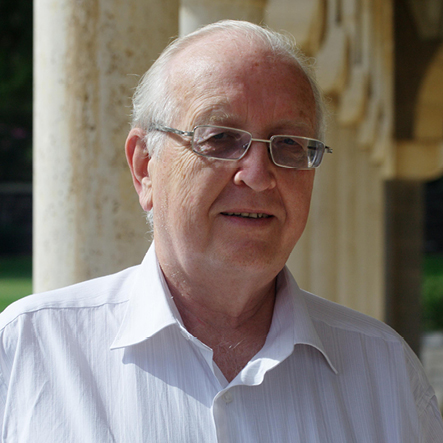
Title: Green nanotechnology
Plenary Speaker
Oleg L. Figovsky
IRI, Israel
Abstract
Green nanotechnology has two goals: producing nanomaterials and products without harming the environment or human health, and producing nanoproducts that provide solutions to environmental problems. It uses existing principles of green chemistry and green engineering to make nanomaterials and nanoproducts without toxic ingredients, at low temperatures using less energy and renewable inputs wherever possible, and using lifecycle thinking in all design and engineering stages.
The production and process aspects of green nanotechnology involve both making nanomaterials in a more environmentally benign fashion and using nanomaterials to make current chemical processes more environmentally acceptable.
This book contains information about advanced nanomaterials that can be produced without harming the environment or human health. This encompasses the production of nanomaterials without environmental toxicity, at room temperature and with the use of renewable energy sources. The book contains the descriptions and results of theoretical and experimental researches in the field of environment friendly nanotechnology carried out over the past decade under leadership of Prof. O. Figovsky. Developments have been used in industry and agriculture and protected by more than 25 patents of USA, Germany and Canada
Biography
Prof. Oleg L. Figovsky ( https://en.wikipedia.org/wiki/Oleg_Figovsky) is the founder of International Nanotechnology Research Centre “Polymate”, where he is carrying now many research works in nanostructured corrosion resistant composite materials and protective coatings based on polymer and silicate matrix. Last his elaborations are nonisocyanate polyurethanes and liquid rubber based polymer concretes. Novel nanotechnologies invented by prof. Figovsky were a base for establishing a few of industrial production in USA, Canada, China, Mexico, Russia and Israel. He is also the President of IAI (Israel), member of European Academy of Sciences, Foreign Members of two Russian Academies of Sciences (REA & RAACS), the chairman of theUNESCO chair “Green Chemistry”. For few of his inventions in nanotechnologies he received gold and silver medals at the IENA98 (Nurnberg, Germany). From 1999 he is the editor-in-chief of the journal “Scientific Israel – Technological Advantages”, from 2012 – of the ICMS-journal (USA). . In 2006 he received the Gold Angel Prize at the “Genious-2006” and in 2007 NASA Nanotech Briefs®’ Nano 50™ Award,. Prof. Oleg L. Figovsky has more than 500 patents and has published and lectured extensively. He has published more 15 books and one of authors of the Encyclopedia of Surface and Colloid Science. Holder of orders “Engineering Glory” & "Antoine de Saint-Exupery".
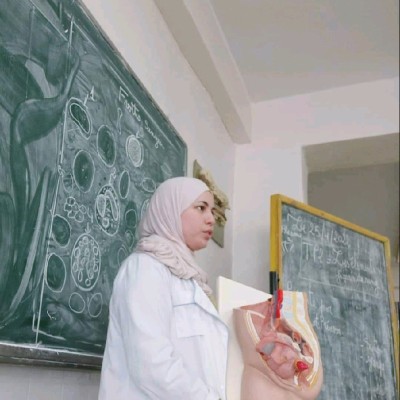
Title: Green Nanoparticle-Integrated Wastewater Treatment Station: Design and Performance
Keynote Speaker
Dr. REMITA Feriel
Environmental Research Center, Alzon, Annaba, Algeria
Abstract
The escalating pollution of water bodies has become a pressing environmental concern with far-reaching socio-economic implications. As industries grow and urban populations expand, the discharge of wastewater containing nanoparticles into natural water sources has become a major contributor to water contamination. Conventional wastewater treatment processes often fall short in effectively removing these microscopic pollutants, leading to potential hazards for both the environment and human health.
In response to these challenges, this study introduces an innovative wastewater treatment approach centered around a specially designed treatment station. The system employs a series of tanks equipped with magnetic technology, thereby addressing the persistent issue of nanoparticle removal from treated water. By capitalizing on the unique properties of magnetic forces, the enhanced treatment process yields improved outcomes in terms of nanoparticle extraction, contributing significantly to the mitigation of water pollution.
Furthermore, this research delves into the incorporation of green nanoparticles, a cutting-edge development in the field of water treatment. Unlike conventional treatment additives, green nanoparticles offer a more sustainable and ecologically sensitive solution. The integration of these environmentally friendly nanoparticles into the treated water not only aids in further purifying the water but also showcases the potential for incorporating nature-inspired solutions into advanced technological applications.
Recognizing the profound socio-economic importance of water quality, this study's findings have far-reaching implications. Effective wastewater treatment directly influences the overall well-being of societies by safeguarding public health and ensuring the availability of clean water for various sectors, including agriculture, industry, and domestic consumption. The innovation presented in this research holds promise not only in terms of its technical efficacy but also in its potential to drive transformative shifts in environmental management practices.
Keywords: wastewater treatment, nanoparticles, magnetic technology, green nanoparticles, water pollution, socio-economic impact
Biography
I am Dr. Feriel REMITA, holding a Ph.D. in animal ecophysiology from the University of Badji Mokhtar Annaba, and as a researcher at the Environmental Research Center (CRE) in Annaba, my career has been defined by an unwavering passion for environmental preservation. Currently, my work at CRE is centered around an innovative project that explores the application of green nanoparticles as a depollution agent while assessing their impact on cellular health. This pioneering initiative aims to develop sustainable solutions to mitigate pollution issues while safeguarding ecosystem health. My dedication to environmental research and conservation continues to drive me to be a catalyst for a cleaner and healthier future.

Title: Application of Nanomaterial in environmental engineering
Keynote Speaker
Dr. Shariat Mobasser
Senior Postdoctoral Research Scientist at Purdue University, USA
Abstract
Nanotechnology is helping to considerably improve, even revolutonize, many technology and industry
sectors: informaton technology, energy, environmental science, medicine, homeland security, food safety,
and transportaton, among many others. Today's nanotechnology harnesses current progress in chemistry,
physics, materials science, and biotechnology to create novel materials that have unique propertes
because their structures are determined on the nanometer scale .
Biography
She received her PhD in civil and environmental engineering. She was a senior postdoctoral researcher at Purdue University. She was a postdoctoral research associate at Michigan State University and Wayne State University. She is an expert in the feld of Remediaton technologies, Nano-environmental engineering, material characterizaton, analytcal engineering, and renewable energy. She has a strong background in the applicaton of material and nanotechnology in civil engineering.
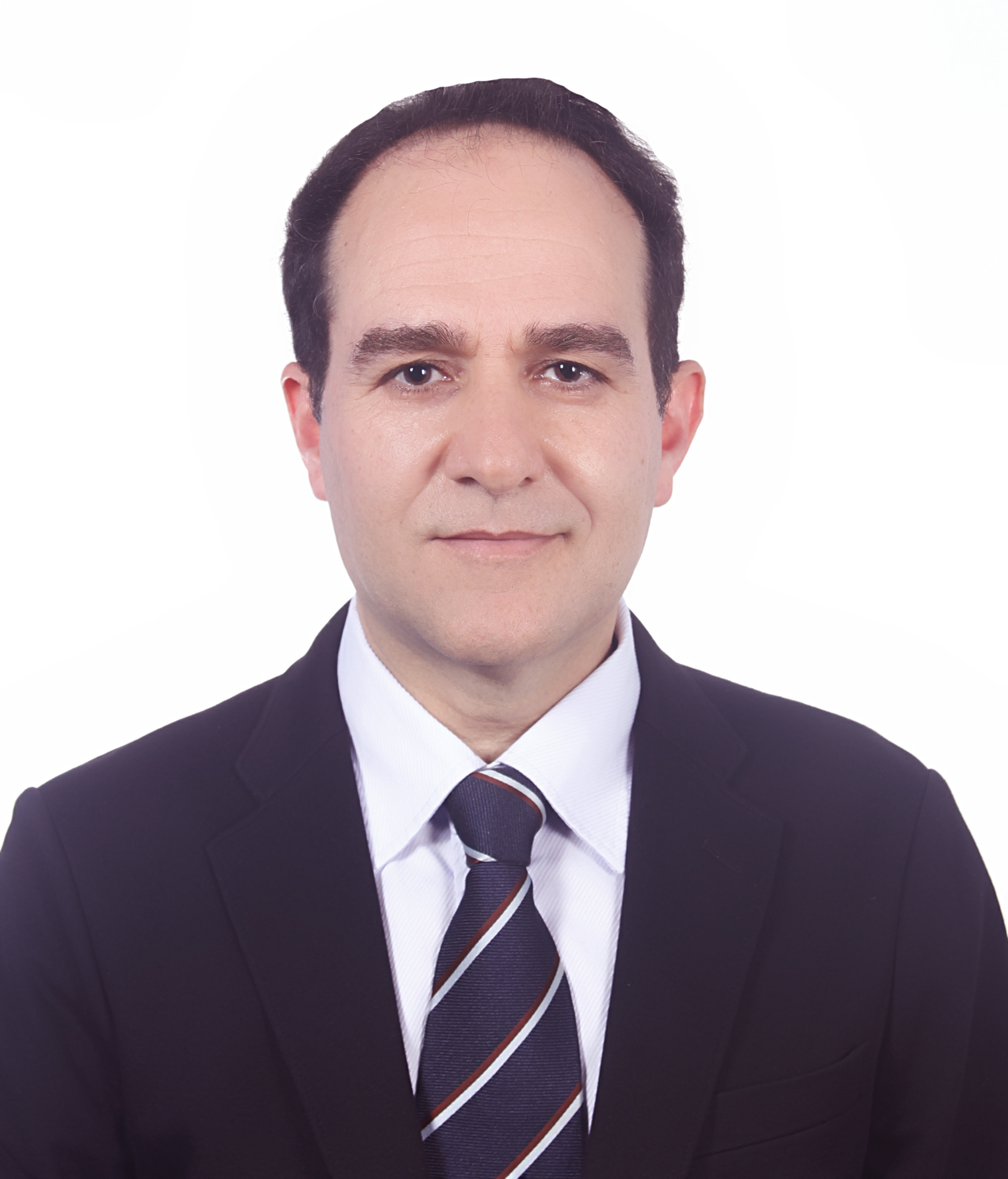
Title: Artificial Intelligence (AI) in Biomedical Engineering
Plenary Speaker
Dr. Hossein Hosseinkhani
Innovation Center for Advanced Technology, Matrix HT, Inc., New York, USA
Abstract
Application of Artificial intelligence (AI) in biomedical engineering technology is rapidly under development. The way AI applies in biomedical science is as the same as natural living cells consider playing the critical rules in their extracellular matrix environment. The present seminar is divided into two parts; in the first part I will discuss the basic principle of the AI technology. In the second part, I will discuss the recent applications of AI technology in healthcare. I will further show some of our recent project in which AI technology has been used in biomedical engineering including in cancer, diabetes, biosensor, and tissue engineering
Biography
Dr. Hossein Hosseinkhani, Biomedical Engineer, has 30 years of experience in biomedical engineering in both academia and industry in biomedical engineering research and development, which includes several years of basic science research experience in a number of premier institutions related to the structure and function of biomaterials, and in polymer-based medical implants development in the medical device industry. He is inventor of 22 International patents, several of which are licensed to companies acting in the biomedical fields and translated to 7 commercial products. He authored more than 100 scientific papers published on peer-reviewed Journals, 5 books (H-index: 48 Google Scholar). He is the founder of Matrix HT, Inc. a world leading biotech company dedicated to healthcare technology to improve patient's quality of life.
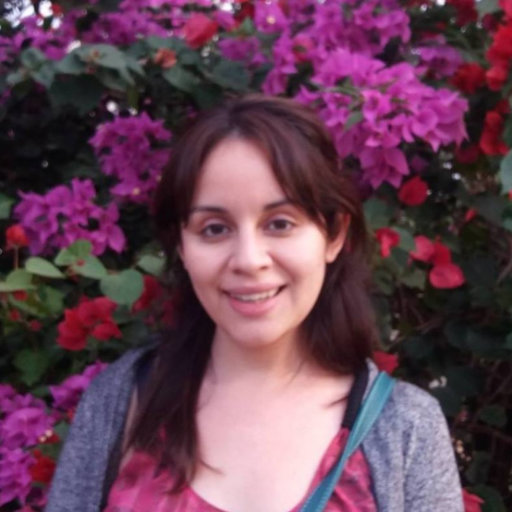
Title: Predicting bioactivity of dendrimers as delivery systems by molecular dynamics and machine learning
Keynote Speaker
Dr. Valeria Márquez-Miranda
Facultad de Ciencias de la Vida, Universidad Andrés Bello, Chile
Abstract
One of the most described challenges in nanomedicine is improving the medicinal effects of hydrophobic drugs and nucleic acid therapeutics through increased protection against degradation by enzymes, controlled release, and improved pharmacokinetics. Dendrimers are a particular case of highly branched three-dimensional synthetic nanoparticles, with a defined size and shape, very low polydispersity, and high chemical functionality. Finding a relationship between physicochemical features of nanoparticles and their function is crucial to avoid testing every single nanoparticle. Molecular dynamics simulations have been extensively used to predict physicochemical parameters such as lipophilicity, solubility, drug loading and retention, which can serve as numerical descriptors for nanoparticles. Specifically, potential of mean force (PMF) calculations have been used to evaluate drug solubility and release profiles of dendrimers. Dendrimers with a lower affinity for a drug promote a rapid release. Then, PMF free energy barriers can be directly correlated with the solubility enhancement. Within the context of our research, we have conducted PMF calculations to evaluate the solubility profiles of several drugs when complexed with dendrimers. Additionally, we have undertaken an exploration of the structural properties governing the formation of dendrimer-drug complexes. In parallel, we have generated three-dimensional structures for more than 40 dendrimers conjugated with various terminal groups. Our overarching objective is to develop a machine learning model capable of predicting the efficacy of dendrimers as carriers for nucleic acids. In this way, features obtained by molecular dynamics simulations are expected to enable the development of predictive models for dendrimer bioactivity.
Biography
Valeria Márquez-Miranda, PhD, Bsc. Bioinformatics, completed her PhD in Biotechnology by Universidad Andres Bello (Chile) in 2017. After that, the completed two postdoctoral fellowships in Neuroscience and Molecular Dynamics simulation areas. She also worked in the industry as Team Lead of an in-silico Drug Discovery team. Currently, she is Assistant Professor in Center for Bioinformatics and Integrative Biology at Universidad Andres Bello in Chile. She has over than 30 publications with an h-index of 13
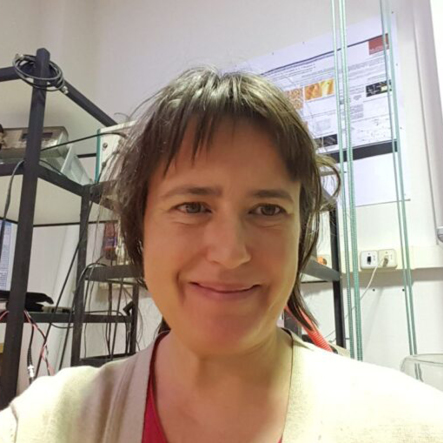
Title: Structure and morphology of nanocomposite polymer films: visualization of nanostructural arrangements by Ultrasonic Force Microscopy
Keynote Speaker
Prof. M. Teresa Cuberes
University of Castilla-La Mancha, Spain
Abstract
Ultrasonic Force Microscopy (UFM) is a relatively new Atomic Force Microscopy (AFM)- based technique, extremely powerful for mapping surface and subsurface stiffness inhomogeneities [1]. We have applied UFM/AFM, complemented by additional relevant structural and physico-chemical techniques such as X-ray Diffraction (XRD), Small Angle X-ray Scattering (SAXS), Fourrier Transformed-Infrared Spectroscopy (FT-IR), etc. to gain insight into the nanostructural organization and surface morphology of thin nanocomposite polymer films. On organic-inorganic ureasil-poly(propylene oxide) (u-PPO400) hybrid film matrices, intended for drug delivery, UFM has allowed us to resolve a new nanoscale structure of beads – formed by clusters of correlated siloxane nodes – aligned into strands, which, in turn, gather into aligned hybrid polymer ropes, that define the film surface morphology [2]. The structure and morphology of Polyvinil Alcohol (PVA) – graphene quantum dots (GQD) nanocomposite films will also be discussed in view of our recent experimental data [3]. The research illustrates the potential of AFM-based procedures, in combination with complementary relevant characterization techniques, to provide further knowledge of the structure-morphology relationship and the nanoestructural arrangements at nanocomposite polymer films.
[1] M. T. Cuberes, Mechanical Diode-Based Ultrasonic Atomic Force Microscopies. In Applied Scanning Probe Methods XI: Scanning Probe Microscopy Techniques, Bhushan, B., Fuchs, H., Eds.; Springer; pp. 39-71 (2009)
[2] J. A. Oshiro, A. Lusuardi, E. M. Beamud, L. A. Chiavacci, and M. T. Cuberes, Nanomaterials 11 (2021)
[3] E. Dhanumalayan, B. Rodríguez, P. Hidalgo, B. Méndez, G. Kovtun, G. Joshi, S. Kallemula, M.T. Cuberes, Nanomaterials (2023), in preparation.
Biography
M. Teresa Cuberes is currently full Professor in Materials Science and Engineering at the Mining and Industrial Engineering School of Almadén in the University of Castilla-La Mancha, Spain. She is an expert in Scanning Probe Microscopy, with pioneering contributions in the field of molecular manipulation with Scanning Tunneling Microscopy in UHV, the study of the electronic properties of buried interfaces using Ballistic Electron Emission Microscopy, and the characterization of nanoscale elastic, viscoelastic and adhesive properties using ultrasonicAtomic Force Microscopy. Currently, she is interested in the preparation and characterization of polymer nanocomposites for applications such as drug delivery and energy harvesters.

Title: Self organizing nanocarrier systems with increased absorption used in cosmetic and food supplement proucts
Keynote Speaker
Dr. Tamás Horányi
Colloid Science Ltd., Budapest, Hungary
Abstract
Absorption enhancement of active ingredients has outstanding importance both in case of skincare and oral products and still in focus of recent studies. Our team successfully developed new self organizing nanocarrier systems with increased skin and oral absorption.
In case of skincare application penetration rate of our system was compared to other nanosystems by skin PAMPA (Parallel Artificial Membrane Permeability Assay) and confirmed for fat soluble active ingredients.
In case of oral applications we were able to control the absorption pathway, enclosed actives are bypassing the liver (1st methabolic pathway) and reaching directly the blood flow via absorption to the lymphatic system. Absorption pathway of active ingredients were monitored and followed by Somatoinfra® which is a quantumbiological medical diagnostic device registred in European Union and as well as a Hungarian investment and patent.
Both the skin and the oral applications were designed with natural ingredients to meet the reent trends on the market and the consumers’ needs. Self-organizing systems are enable the possibility of a definitely easier industrial scale-up because of no any sophistycated devices or high energy input is necessary
Biography
Dr. Horányi graduated in 1998 as a chemical engineer at the Budapest University of Technology and Economics. Started his scientific work in 1996, extensively studied the penetration properties of human skin and obtained his PhD degree also in this topic. He has 26 years of experience in the field of product development including cosmetics, pharmaceuticals, dietary and food supplements, agrochemicals, composites and nanotechnology. His professional career is countermarked by more than 1000 products. Recently he is responsible for all R&D activities of and for the whole production at Colloid Science Ltd. and at Villa Medica Brand
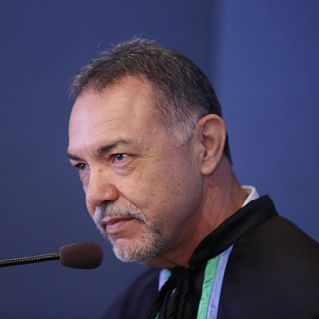
Title: Magnetic hyperthermia performance using exquisite nanomorphology
Plenary Speaker
Prof. Paulo César DE MORAIS
Catholic University of Brasília Brazil
Abstract
In this plenary talk, magnetic nanorings (MNRs) will be introduced for application in magnetic hyperthermia (MHT). This material platform provides full control of the operating temperature for MHT protocols. Temperature (T) versus time (t) curves recorded from suspensions containing MNRs and subjected to externally applied AC magnetic field will be presented and discussed. Curves of T versus t regarding different morphologies also will be presented and discussed. It will be shown that by changing the nanosized magnetic materials’ morphology asymptotic temperatures can be successfully modulated to fall within the required temperature range of cell apoptosis. Moreover, the time dependence of the suspension’s temperature is pioneering modeled by an equation derived using well-established concepts of heat transfer across a boundary material layer. The derived expression is analytically identical to the phenomenological proposal repeatedly employed in the literature (Box-Lucas method). In summary, the talk content is quite relevant for the field of MHT with original data analysis, thus being of high impact to both the field of biomagnetic materials and for supporting protocols for MHT as a safe therapy in the daily clinic
Biography
Paulo C. DE MORAIS, PhD, was full Professor of Physics at the University of Brasilia (UnB) – Brazil up to 2013, Appointed as UnB’s Emeritus Professor (2014), Appointed as Guest Professor of Huazhong University of Science and Technology – China (2011), Visiting Professor at Huazhong University of Science and Technology (HUST) – China (2012-2015), Appointed as Distinguished Professor at Anhui University (AHU) – China (2016-2019), Appointed as Full Professor at Catholic University of Brasília (UCB) – Brazil (2018), Appointed as CNPq-1A Research Fellowship since 2010, 2007 Master Research Prize from UnB, 2008-member of the European ERA NET Nanoscience Committee, Member of the IEEE-Magnetic Society Technical Committee, Senior Member of the IEEE Society, 2012 China’s 1000 Foreign Expert Recipient, and 2012 Academic Excellence Award from Brazilian Professor’s Union. He held two-years (1987-1988) post-doc position with Bell Communications Research – New Jersey, USA and received his Doctoral degree in Solid State Physics (1986) from the Federal University of Minas Gerais – Brazil. He graduated in both Chemistry (1976) and Physics (1977) at UnB. Professor Morais is member of the Brazilian Physical Society and the Institute of Electrical and Electronics Engineers – IEEE. He has served as referee for more than 50 technical journals, takes part of the Editorial Board of more than 15 technical journals and has conducted research on nanomaterials for over 40 years. He has delivered more than 150 Invited Talks all over the World. He is known for his research in preparation, characterization and applications of nanosized materials (magnetic fluid, magnetoliposome, magnetic nanoemulsion, magnetic nanocapsule, magnetic nanofilm, magnetic nanocomposite, nanosized semiconductors, polymeric dots, carbon dots, and graphene quantum dots). With nearly 500 published papers in peer reviewed journals, over 12,000 citations and 15 patents, he has appeared in recent World ranking of top 1% scientists, such as 2020-Stanford, 2022-Research.com, and 2023-AD Scientific Index

Title: How to Make Lipid Nanoparticles for Targeted Drug Delivery
Plenary Speaker
Alexander K. Aust, MS, MBA
AUST Business Solutions, USA
Abstract
Oligonucleotide, small molecule, and bioactive lipid therapeutics are beginning to play a larger role in the treatment of many infectious diseases and cancers. However, these therapeutics are highly unstable, are degraded when administered, and are often inhibited from crossing certain membrane barriers due to their physical size and negative charge.1 Nanoparticle manufacturing, which overcomes these barriers, has become an increasingly popular apparatus for drug delivery systems (DDS). There are several methods for screening lipids or polymers for use in DDS formulation (i.e., mixing methods), such as emulsification, micromixing, extrusion/homogenization, solvent injection, and microfluidic methods. Drug product characterization is key. There are several methods for characterization, such as dynamic light scattering (DLS), zeta potential, HPLC, and more. These methods look for particle size, purity, composition, encapsulation efficiency (EE), charge, and polydispersity.2 Ensuring that the chosen manufacturing equipment can uphold these specific characteristics is critical in producing the perfect nanoparticle. At smaller/pre-clinical scales, the LNP formulation (i.e., formation of actual nanoparticles) is most commonly performed by microfluidics. Once cGMP clinical trials start, the microfluidics technology is replaced with solvent injection in order to function at larger scales. At smaller scales, Dialysis may be used in place of TFF.
Biography
Alexander has spent the previous twelve years working in various roles related to the commercialization and manufacture of complex parenteral drug products (e.g., lipid nanoparticles, liposomes, suspensions, emulsions, PEG, inorganic nanoparticles, siRNA, mRNA, miRNA, pDNA etc.). These roles include: Corporate Development, Business Development, Regulatory (CMC), Manufacturing, Supply Chain, Quality Assurance, Validation Engineering, and Quality Control. Alexander’s experience includes executing over 30 RNA technology transfers with lipid-based formulations at various stages of the product lifecycle, from Pre-Clinical through Commercial. Currently, Alexander leads AUST Business Solutions, www.austbs.com, which offers consulting services for Drug Sponsors, CDMOs, and Investors in the Cell and Gene Therapy space. Alexander earned his M.B.A from Ball State University with a concentration on Manufacturing and Production Management. Previous to this, he obtained an M.S. from Purdue University while studying Molecular and Cellular Biology; his undergraduate studies were completed at the University of Southern Indiana; where he majored in Biology and minored in History.

Title: Nanosynthesis, Ink formulation and inkjet printing of CIGSS and CZTSS solar cell"
Plenary Speaker
Prof. Ahmed Ennaoui
Virtual learning university, Germany
Abstract
We present a low-cost process scenario which has the potential to produce and upscale a variety of functional materials and related solar devices. It consists of three-steps approach for processing light absorbing compounds: (1) Nano-synthesis (or molecular synthesis) of the required precursors, (2) Formulation of long-term stable and printable ink, (3) Drop-On-Demand (D-O-D) inkjet printing layers followed by a reactive annealing process. The first step, nanofabrication is a “mature” process for processing compounds with tunable size, shape, and surface passivation that can exhibit new behavior and change of the material properties compared to the bulk materials. The second step plays a crucial role to design and optimize a functional printable ink in term of composition, viscosity, band gap tuning, and wettability. The third stage is an additional fabrication technique printing picotiter drops of the formulated ink with negligible materials waste and significant reduction of raw materials cost. The reactive annealing can promote both diffusion of the reactive elements in the printed layers and the crystallization of the alloy. The goal is to optimize a process well adapted for high efficiency Roll-to-Roll (R2R) and flexible technology and to produce monolithically integrated inkjet printing solar devices. We discuss several devices explored in my former group at Helmholtz-Center Berlin. Two emerging materials are explored: Kesterite, Cu2ZnSn(SSe)4, (CZTSS), and Chalcopyrite Cu(In,Ga)(S,Se)2 (CIGSS), both exhibit promising photovoltaic performances.
Biography
Prof. Ahmed Ennaoui is a Physician and material scientist, Chairman of the Scientific Council of IRESEN, "Research Institute for Solar Energy and New Energies". He serves as Professor at HBKU and Research Director at QEERI. He workes at Helmholtz Zentrum Berlin (HZB) as head research group and project leader. His research interests are primarily focused on emerging thin-film PV technology, including 2D layered materials, and the conversion of light into chemical and electrical energy. His Published work on thin-film solar cells has been recognized with an h-index 50. He granted several patents and authored over 300 peer-reviewed papers and numerous conference contributions, including 5 special issues.He published with his colleagues one chapiters book on “Simple Chemical Methods for Thin Film Deposition: Synthesis and Applications“. He is a member of the editorial Board of Solar Energy Materials and Solar Cells. During his career he supervised more than 40 completed thesis and ca. 15 Postdoctoral have worked in his group. In 2019, he founded the Virtual-Learnin University committed to sciences and techniques and Online-Opening-Lectures // https://vluplatform.net //.
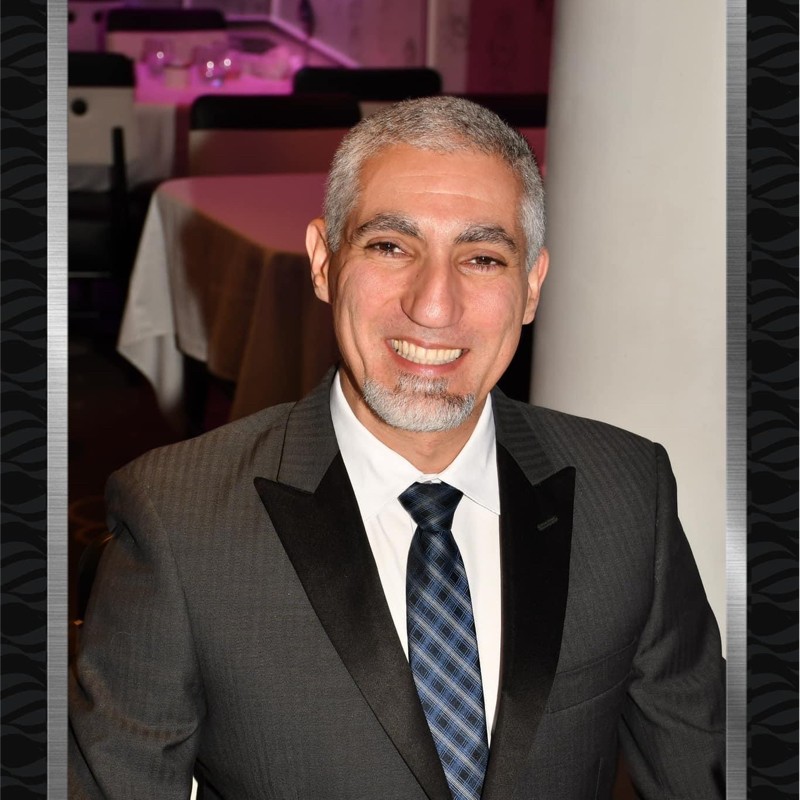
Title: “Phytocannabinoid Nanoemulsions and their Applications in Food and Beverages”
Keynote Speaker
Vardan Ter-Antonyan
Mile High Labs Inc. Colorado, USA
Abstract
The consumption of Phytocannabinoids along with other natural herbal extracts and dietary supplements in humans is widespread resulting from numerous clinical studies helping support beneficial results across an array of wellness areas. Reported benefits of Phytocannabinoids include helping support everyday calmness, focus, relaxation, recovery from exercise induced inflammation, healthy sleep and overall wellness. However, the results are concentration dependent. Phytocannabinoids are lipophilic and when ingested the bioavailability is as low as 5% depending on the diet, hence their absorption and accumulation in the body necessary for the benefits to manifest themselves occur very slowly as the body excretes up to 95% of the ingested cannabinoids. Various clinical studies have found that upwards of 600mg of Cannabidiol (CBD) is necessary to accumulate in the body to help promote calmness and relaxation. At 5% absorption, the ingested amount of just pure CBD will have to reach 12g, ingested in a short period of time, because its half life is 24 hours. Additionally, CBD concentration in the typical infused oil products like oil tinctures, and foods is 5mg – 100mg per serving, hence a human would have to ingest from 120-2400 servings of oil to absorb 600mg of CBD, which may cause harmful side effects. Nanotechnology solves the problem of low Phytocannabinoid bioavailability, while making sure the products stay safe and effective. Increasing the bioavailability of a lipid requires a very delicate process of nano-droplet engineering, which leads to lipid molecules self-organizing into the cores of nano-micellar structures that are hydrophilic on the outside and lipiphilic on the inside. Clever use of proper surfactants and carrier oils is vital to formation of a stable nanoemulsion. This presentation will discuss various techniques of stable nanoemulsion formation, as well as the relationship between micelle size and the lipid payload concentration, bioavailability, safety, and stability.
Biography
Vardan Ter-Antonyan holds MS degree in Molecular Bio-Physics from the University of South Florida in Tampa, FL and BS degree in Physics from Yerevan State University, Yerevan, Armenia. Vardan is currently the R&D Manager at Mile High Labs in Loveland, CO. Vardan has over 18 years of pharmaceutical, medical device, OTC and Dietary Supplement industry experience that includes formulation of most types of drug delivery systems. His focus of research since 2018 has been nanotechnology as it relates to enhancing bioavailability of phytocannabinoid lipids like CBD, CBN, and CBG of the cannabis plant by making stable (oil-in-water) nano-emulsions, and their application in food and beverage industries.

Title: Implications and Correlations Between Food in the Macrowold and Its Relationship to Nanotechnolgy
Speaker Presentation
Aaron Billet
Enola, Pennsylvania, United States
Abstract
Nano Jelly with Novel Applications:
Pectin-based “freezer jellies” which can be made in bulk and stored in an operating room’s freezer could serve as a substrate reservoir. In turn, a dispersion of nano Boron, stem cells would:
• have the ability to inject/refill sections of the brain after resection surgery with a biofriendly material
• be capable of intrinsic stem cell differentiation and mimic glial cell-like structural scaffolds
• distribute quantum nano Boron particles (Boron has been shown to increase dexterity, motor skills, cognitive function, and memory). It be noted that Boron also raises estrogen levels, this is something of special note to men.
• allow the Hydrogen produced to transfer through the CSF and cross the blood-brain barrier. (Hydrogen has been shown to protect against a variety of neurological conditions and insults and to the spinal cord).
• create a structure with hign impact resistance and capable of physical and functional neuroplasticity post-surgery
• use UV B irradiation prior to deposition (directly stimulating the production of vitamin D and encourage its action as an anti-inflamatory)
• and more...
Theoretically, it would possible to inject such a jelly locally at will (in cases of neurological insults, tumors, regions of seizure origin, and to other parts of the brain affected by dementia, for example).
A section of tissue could be volumetrically scanned in real-time, use computer vision (CV) to detect presence or absence of pathology, and begin an acetate mold for an extruded 3D replacement.
The means to re-establish connectivity are vast.
Biography
Aaron M. Billet: I am an infinitely curious inventor/futurist with interest in the most advanced technology of our time, such as: nanotechnology, materials science, AI, AR/VR/MR, telecommunications, human security, 3D printing, and more. I come from a tragic past – yet better for it. As a child, I had 19 neurosurgeries stemming from congenital hydrocephalus, which has since left me with epilepsy and compromised vision. This would eventually lead me to learn all that I could about neurology through self-study. I struggled though school in my childhood, yet found my niche in the world as a teenager. My family hosted two exchange students from Spain’s Basque Country. My twin sister (Audra) did not take to the innate desire that I had to learn the language, nor the culture in a genuine way. During that time, I was also studying culinary arts at a career and technical that both my mother and stepfather were also faculty. For two summers, I was invited by both boys to Spain. As a thank you gift, I was given the ability to attend immersion language schools on both occasions. I would get special permission to ride my bike for two miles between the tech school and my high school and finished a four year curriculum in two. Afterwards, I did private study for the consecutive years. The language training was/is indispensable to me. After later graduating from the Culinary Institute of America, I was able to cook for: Ellen Degeneris, Sean Connery, Angelina Jolie, Tom Ridge, the Swiss Ambassador, and President Clinton (usually as part of a team). I have literally worked from coast to coast (Hotel del Coronado (San Diego) to Atlantic City. I have a B.S. in Workforce Education and Development from Penn State, and have been licensed/taught in both Spanish and culinary arts. Sadly, when I graduated Penn State, I was ineligible for a teaching credential in PA. Hence, I took the certification route offered to native-speakers in VA and missed only 3 questions on the entire exam. I have always had a deep respect for both academia and practitioners. With a credential in Competency Based Education, I believe that I am well positioned to analyze the changing world of work around the world. In 1999, while presenting at an innovation conference, I taught/demonstrated the use of QR codes. I was not met with enthusiasm. At the age of 40, I was diagnosed with Asperger’s (ASD). At least now my friends and family had a name for my quirkiness. All of these experiences gave me the ability to look at things extremely differently. While not a formerly trained scientist, as funny as it seems, I presented things to family and friends three decades ago that are now coming true. I hope to bring a unique skillset to the table which may be of both interest and utility to you all.

Title: Advancements in Nano-Particle Tracking Analysis
Keynote Speaker
William Bernt
Particle Characterization Laboratories, Inc, USA
Abstract
Nano-particle-tracking analysis, or NTA, is a particle characterization method used to determine the size and concentration of nanoscopic particles ranging from ~10nm up to around a micron in size. The NTA method is based on simultaneously imaging tens to hundreds of sub-micron particles undergoing random Brownian motion. By collecting many thousands of frames of this random motion software can determine, particle-by-particle, the diffusion and thus the size of the particles via the Stokes-Einstein Diffusion Equation. Furthermore, by counting the number of particles in a known illuminated volume, concentration can be determined. The method was developed by Dr. Robert Carr in 2003 and introduced to the scientific community in the form of the first NTA instrument, the LM-10.
The NTA method has been readily adopted by analysts across a wide range of fields and applications. NTA has recently been identified as the single fastest growing sector of the particle characterization market. Annual sales of NTA instrumentation reached over twenty-four million dollars and has a projected 6% annual sales growth. But despite its popularity the method, has been plagued by very specific limitations. Principally these had to do with particle detection.
Although particles as small as 10nm have been characterized, the limit is predicated upon the difference of the refractive index of the particle and the medium in which it is suspended. Particles such as gold, silver and quantum dots, all of which have relatively high refractive indexes, and are easily visualized by the method. But biological particles, such as exosomes, viruses and protein aggregates, have much lower refractive indexes. Thus, for these types of samples, the lower limit of detection has been in the range of 70-100nm.
This talk will focus on recent advancements in NTA instrumentation which extend the lower range of detection for these more difficult particles. Additionally, instrument-to-instrument performance, as well as other factors that enhance the NTA user’s experience, will be discussed
Biography
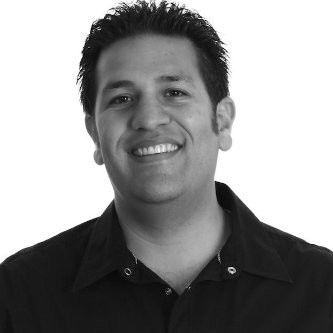
Title: Thermal Transport Analysis and Challenges of Nanofluids and Nanolubricants
Speaker Presentation
Jose Taha
The University of Texas Rio Grande Valley, USA
Abstract
Technology and industrial developments demand effective energy utilization and its management in a greater extent. Conventional heat transfer fluids and lubricants are typically low-efficient heat dissipation materials. Wear and thermal management are key factors in a wide variety of fields such as automotive, microelectronics, high-voltage power transmission systems, medical therapy and diagnostics, and bio-pharmaceuticals, among others. The advent of nanofluids greatly improved the issues of conventional materials regarding thermal transport, wear and friction since nanofluids have shown many interesting properties and distinctive features offering extraordinary potential for many applications. Nanofluids are highly effective heat transport media, attributed to its anomalous high thermal conductivity. Solid structures possess high thermal conductivity, compared to conventional fluids, by several orders of magnitude. The metal-mechanic industry is intensive in operations of material transformation that demand a high energy consumption to overcome the friction and wear generated in the manufacturing processes. In automotive industry, for instance, there are diverse manufacturing processes which involve the contact of machinery components and tooling. Novel developments on advanced high strength steels are commercially available, which aid on weight reduction, CO2 emissions and improves the fuel consumption efficiency of vehicles. Proper lubrication or material protection is suitable to avoid critical wear and damage, such as scratches, galling or die fractures, including faults or scrap in the final produced components. The minimization of friction and wear generated could be achieved by applying diverse technologies such as surface engineering (coatings), surface thermal treatments and laser texturing, among others
Biography
José Taha completed his PhD in Materials Science and NanoEngineering (MSNE) from Rice University, USA. He has +22 years of industrial experience and +20 years of Academic and Research proficiency. He has wide experience in leadership, planning, development, and maintenance of diverse sets of R&D and cost-reduction projects. He has published more than 60 peer-reviewed papers in congresses and specialized journals. His current research interest focusses on the synthesis and characterization of nanofluids and nanolubricants for energy/thermal management and tribology applications, as well as nanocomposites and metallic components for industrial manufacturing processes
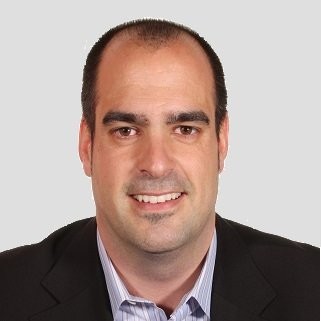
Title: Design of a new equipment for handling nanomaterials: SafeInNano project
Speaker Presentation
Mr. Ekaitz Olaguenaga
Burdinola S.Coop, Spain
Abstract
Nanotechnology and nano material handling in the workplace are identified as two of the main emerging risks. Nowadays, handling of nanomaterials in the working environment require specific technical measures. In addition, it must also permit even the most common operations to be carried out safely. Compliance with standard UN EN 14175 is a necessary condition, but it may not be sufficient for the containment of chemical agents. Other collective predictive equipment with variable air volume are characterised by maintaining a constant air velocity in the sash plane. So far, these are the ones that have shown a lower release of nanomaterials outside owing to the small quantities handled and their volatility because of their low weight. However, part of the sample is frequently lost during weighing and transfer tasks. The ease with which nano materials disperse in the air during handling makes it necessary to reduce air velocities. Furthermore, the absence of a common regulatory framework requires defining a testing and validation process of the equipments. Having said that, the challenge is to find technical solutions that combine the ability to work with low flows and maximum safety for the exposed personnel and validate that with new testing and validation processes.
Biography
Since 2019 he has been the Director of Innovation at Burdinola. After completing his engineering studies, he began his professional career as a Project Engineer at the Telek company. Subsequently, he developed his professional activity as an R&D Engineer at Ingeteam (2007) and Project Director (2008-2013) at Tecnalia. Finally, he worked as Director of Engineering at General Electric (2013-2019) until joining Burdinola. Between 2006 and 2017 he will combine his professional activity with teaching at the University of the Basque Country, within the Department of Electronics and Telecommunications at the Bilbao School of Engineering.
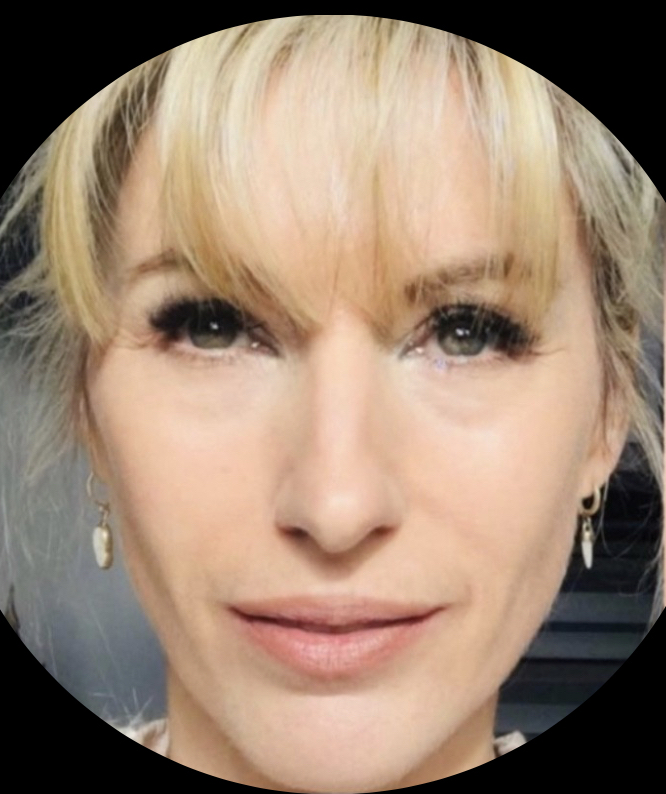
Title: ioooi - Intent of Our Organised Information; To unify science, consciousness & technology through a multi sensory experience of energy, frequency and vibration with the Alphabet of the Heart
Speaker Presentation
Ms. Jane Cuva
Private researcher, sound alchemist and creator. Guildford, United Kingdom
Abstract
Peter Russel in his book ‘From Science to God’ states that “spiritual knowledge and scientific knowledge now share a common ground. With the shift to a consciousness metaparadigm the integration goes much further. This meeting of science and spirit is crucial, not just for a more comprehensive understanding of the cosmos, but also for the future of our species.” Intent of our Organised Information (ioooi) is a pioneering education and multi-sensory immersive app and platform that will unlock the interactive spherical Alphabet of the Heart; Research and observation have revealed that toroidal fields are not abstract constructs but are intimately intertwined with the human experience of language and communication. A correlation exists between the shapes of toroidal fields and the sounds we produce with particular emphasis on vowels. When we vocalise different letters and sounds, the intention behind the sound combines with the physical mechanisms of our vocal apparatus giving rise to a distinct toroidal pattern. We now have the AI generative software operating system to teach a new geometric 3D VR/XR/MR holographic visual, auditory, kinesthetic/ haptic, interpretive symbol language set -opening a portal to a new inner understanding and awareness of the fact that, in an age of unprecedented advances in technology, we must not lose sight of the most advanced biotechnology to date; the human body. What role does sacred geometry play in sound and language, our DNA and healing? New research reaffirms the connection between intention and the symmetrical chrystalline structure of water, which makes up 70% of our bodies. nergy, vibration, as an expression of consciousness.
Biography
Jane Cuva received her BA Hons degree in languages from the University of Portsmouth, UK. Her discovery of the therapeutic power of music led to Jane using her musical gifts and voice to help those in clinical settings with alzheimers/ dementia and as a result of this community work to Jane being asked to sing for 1,000 of the Queen’s staff at Windsor Castle in 2018. Research into new and ancient energy healing technologies, cymatics, sacred and fractal geometry and the use of this ancient wisdom in sacred spaces, has led to collaborations to present this information in a multi-dimensional way through music.
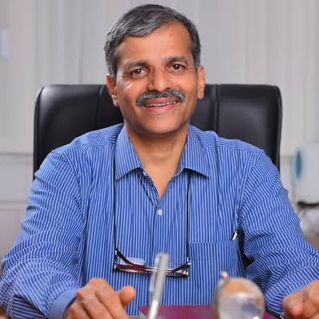
Title: Engineering at the Nanoscale: A Strategy for Developing High Performance Functional Materials from Biopolymers
Keynote Speaker
Prof.(Dr) SABU THOMAS
Mahatma Gandhi University India H Index: 133
Abstract
Green chemistry started for the search of benign methods for the development of nanoparticles from nature and their use in the field of antibacterial, antioxidant, and antitumor applications. Bio wastes are eco-friendly starting materials to produce typical nanoparticles with well-defined chemical composition, size, and morphology. Cellulose, starch, chitin and chitosan are the most abundant biopolymers around the world. Cellulose nanoparticles (fibers, crystals and whiskers) can be extracted from agrowaste resources. Chitin is the second most abundant biopolymer after cellulose, it is a characteristic component of the cell walls of fungi, the exoskeletons of arthropods and nanoparticles of chitin (fibers, whiskers) can be extracted from shrimp and crab shells. Starch nano particles can be extracted from tapioca and potato wastes. These nanoparticles can be converted into smart and functional biomaterials by functionalization through chemical modifications due to presence of large amount of hydroxyl group on the surface. The preparation of these nanoparticles includes both series of chemical as well as mechanical treatments; crushing, grinding, alkali, bleaching and acid treatments. Since large quantities of bio wastes are produced annually, further utilization of cellulose, starch and chitins as functionalized materials is very much desired. The cellulose, starch and chitin nano particles are currently obtained as aqueous suspensions which are used as reinforcing additives for high performance environment-friendly biodegradable polymer materials. These nanocomposites are being used as biomedical composites for drug/gene delivery, nano scaffolds in tissue engineering and cosmetic orthodontics. The reinforcing effect of these nanoparticles results from the formation of a percolating network based on hydrogen bonding forces. The incorporation of these nano particles in several bio-based polymers have been discussed. The role of nano particle dispersion, distribution, interfacial adhesion and orientation on the properties of the ecofriendly bio nanocomposites have been carefully evaluated
Biography
Sabu Thomas is currently the Vice-Chancellor of Mahatma Gandhi University, Kottayam, Kerala, India. He is a Professor at the International and Inter University Centre for Nanoscience and Nanotechnology and Full Professor of Polymer Science and Engineering at the School of Chemical Sciences of Mahatma Gandhi University, Kottayam, Kerala, India. His ground-breaking research has covered the areas of polymer science and engineering, polymer nanocomposites, elastomers, polymer blends, interpenetrating polymer networks, polymer membranes, green composites and nanocomposites, nanomedicine and green nanotechnology. Prof. Thomas has received several national and international awards in recognition for his work, and recently received Honoris Causa (DSc) from the University of South Brittany, Lorient, France, in recognition for his contributions to polymer science and engineering. Prof. Thomas has published over 1400 peer- reviewed research papers, reviews and book chapters. He has co-edited more than 200 books. Currently he is having a H index of 133 with 86000 citations
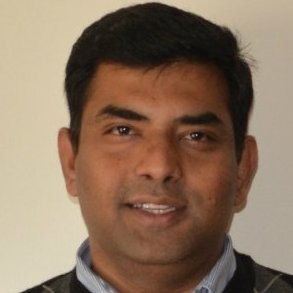
Title: Long-Acting Injectable Hepatic Stellate Cell-Targeting Nanoparticles for Hepatocellular Carcinoma (HCC) Chemoprevention
Keynote Speaker
Dr. Manjeet Deshmukh
Aurobindo Pharma USA, Inc., USA
Abstract
: Safety is a prerequisite for preventive medicine, but non-toxic agents are generally ineffective as clinical chemoprevention. A new strategy was developed for overcoming this challenge by delivering molecular-targeted agents specifically to the effector cell type to achieve sufficient potency while circumventing toxicity in the context of cancer chemoprevention. Hepatic myofibroblasts drive progressive fibrosis that results in cirrhosis and liver cancer. In a rat model of cirrhosis-driven liver cancer, a small molecule epidermal growth factor receptor inhibitor, erlotinib, was delivered specifically to myofibroblasts by a versatile nanoparticle-based system, targeting platelet-derived growth factor receptor-beta uniquely expressed on their surface in the liver. With systemic administration of erlotinib, tumor burden was reduced to 31%, which was further improved to 21% by myofibroblast-targeted delivery even with reduced erlotinib dose (7.3-fold reduction with equivalent erlotinib dose) and less hepatocyte damage. These findings demonstrate a strategy, cell type-specific kinase inhibition, for more effective and safer precision cancer chemoprevention
Biography
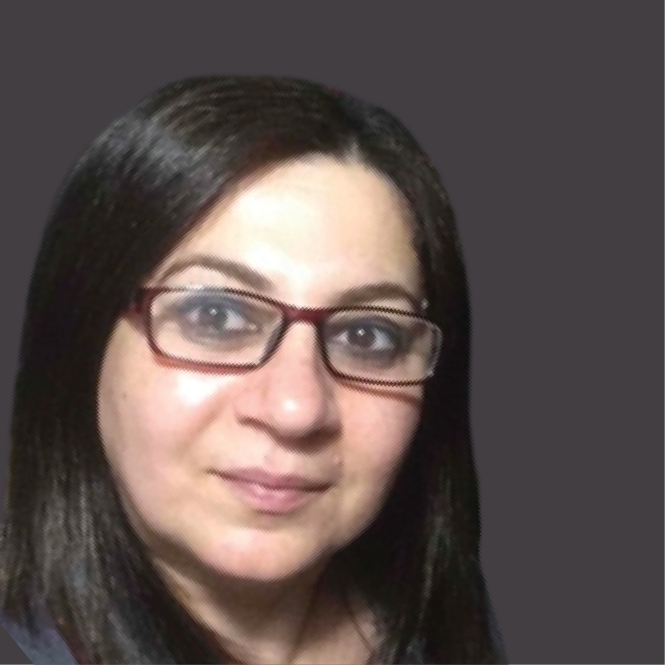
Title: Proteinase-activated receptor 2 is involved in the behavioural changes associated with sickness behaviour
Keynote Speaker
Dr. Roua Abulkassim
Almanara college of biomedical sciences, Iraq
Abstract
Proteinase-activated receptor-2 (PAR2) is widely expressed in the CNS but whether it plays a key role in inflammation-related behavioural changes remains unknown. Hence, in the present study we have examined whether PAR2 contributes to behaviour associated with systemic inflammation using PAR2 transgenic mice. The onset of sickness behaviour was delayed and the recovery accelerated in PAR2(-/-) mice in the LPS-induced model of sickness behaviour. In contrast, PAR2 does not contribute to behaviour under normal conditions. In conclusion, these data suggest that PAR2 does not contribute to behaviour in the normal healthy brain but it plays a role in inflammation-related behavioural changes.
Keywords:
Anxiety; LPS; Locomotor activity; Proteinase-activated receptor-2; Sickness behaviour; Sucrose preference
Biography
“ Will be updated soon...”
“ Will be updated soon...”
+91 9491 456 452
Door No.200, Immidhihalli Main Road, Whitefield-560066, Bangalore, India
About Us
Global Scientific Guild organizes conferences and webinars to promote quality research and real world impact in an atmosphere of true international co-operation between scientists, doctors, professors, practitioners, engineers and industry by bringing together the world class renowned personalities to discuss the latest developments and innovations at one common platform.